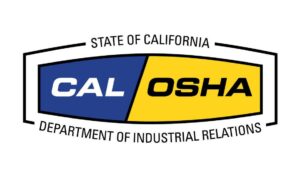December 16, 2021
The Cal/OSHA Standards Board met for the second readoption of the Emergency Temporary Standards (ETS) related to COVID-19. Procedurally, this means that there are rules on the books that employers are required to abide by regarding workforce protection from COVID-19 through April 2022. In April 2022, a permanent standard will be adopted, and language for that proposed permanent standard took up the second portion of today’s Board meeting.
The Chamber was proud to sign a coalition letter led by the CalChamber raising specific points to the Board about the second readoption. After a few dozen callers, the Board voted with one opposing to readopt the revised ETS. A few specific changes you should be aware of:
- Most circumstances where there was not a requirement to test or exclude a vaccinated and asymptomatic staff member have been removed. Generally, vaccinated and unvaccinated staff members are treated the same.
- After instances of exposure, social distancing must be reinstituted even for vaccinated employees, and even if that employee tests negative.
- Tests that are approved are expanded to include self-administered tests. However, if an employer relies on self-administered tests, the results must be read by an observer.
- Masks that are allowable can now include gaiters so long as they are two layers of fabric. Additionally masks must pass the flashlight test, meaning that light cannot pass through for them to be deemed adequate.
We understand that many of these changes add to an already frustrating policy landscape for employers doing their best to comply. At this point, employers should know that there is a 10-day period where the Office of Administrative Law reviews and considers the standard, at which point it will go into effect. However, what is very important to keep an eye out for is the FAQ document(s) that will follow and provide much greater clarity concerning the granular ways in which compliance can occur.
In the meantime, we continue to monitor the discussions around the permanent standard, and unfortunately, there is little clarity or agreement about the best way forward. Following hours of debate by panelists and the Board at the latter half of the meeting, there was very much confusion about the process, the data being considered, and even fundamental questions about what vehicle could be the most appropriate. For instance, it could be an amendment to the Injury and Illness Prevention Plan documents that employers are already required to have, or just an additional two years of the temporary standards, or even a permanent aerosol standard. Additionally, major debates around whether exclusion pay will be included, or how to educate and empower the workforce to be safe and knowledgeable were present.
The Chamber will provide updates on the ETS as new information is available. If you have any questions, please don’t hesitate to reach out to our team. We also recommend making sure that you have an updated and accessible Injury and Illness Prevention Plan that clearly outlines your workplace’s prevention efforts for COVID-19 and you are communicating often with your team about your protocols.
